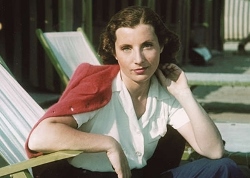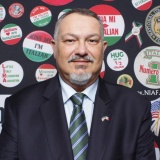
WTI Magazine #70 2015 October, 16
Author : Giovanni Verde Translation by:
The history of Palma Bucarelli is that of a life devoted to art, especially to a vision of the art that failed to escape from classical schemes, with the goal of breathing the fresh and complex air of the '900. A vision that will make this great intellectual protagonist of a cultural revolution in Italy. Palma Bucarelli was born in Rome on March 16, 1910. She graduates in Literature at the University "La Sapienza".
She studies together with Giulio Carlo Argan, who will mark the Art History education of the twentieth century. Together with him, Palma wins the ministerial competitive exam of 1933, and soon starts working at the Galleria Borghese. In July 1941, she takes over the direction of the National Gallery of Modern Art.
During the war, she saves several works of art, dividing them among Castel Sant'Angelo in Rome and the Palazzo Farnese in Caprarola.
After the war, the revolution lead by Palma in the Roman artistic world allows Italy to approach an artistic avant-garde. With the acquisition of the "Grande Sacco" of Alberto Burri, blatantly explodes the controversy between abstraction and the more consolidated realism. In 1959 Palma organizes an exhibition of works by Burri which causes strong reactions even from the political world, considering Burri too alien to the traditional art.
Several gestures of hers cut with tradition and open to an art of protest. In 1968 Palma Bucarelli gets in touch with a new group called "Gruppo Laboratorio 70" based in Rome, formed by the artists De Dominicis, Matteucci, Notargiacomo and Grottesi. In Rome this group is seen as revolutionary in the field of Art. From the exhibitions in the gallery, these artists decide to bring art and gestures of art for the first time in the squares and in the streets. The "Pillole Pincus" in St. Peter's and the guillotine in Piazza del Popolo, do symbolize a break with Mannerist realist painting.
In 1968, once again Palma makes a bold gesture and invites the Gruppo Laboratorio 70 to the National Gallery of Modern Art, creating disappointment and discontent among the traditional painters and critics.
In more than thirty years as a director, Palma Bucarelli has been focusing on the enrichment and accommodation, with modern museological criteria, of the National Gallery of Modern Art. The Gallery lose its appearance of simple container of works of art, becoming a meeting point and a provider of useful information not only for art critics and experts, but also for the artists and the general public. For the public, considered a central element of the enjoyment of art, Palma sets up an innovative service of "teaching", a program of events which includes conferences and annual screenings, exhibitions, educational exhibits with replicas of the most great international artists and works from the collection of the gallery.
First Italian woman to be appointed director of a public museum, Palma Bucarelli led the National Gallery of Modern Art from 1942 to 1975. She dies in Rome, aged 88, on July 25, 1998. Loved and envied, supported and opposed, even protagonist of parliamentary questions for her management and for her acquisition policy, Palma Bucarelli has left a strong mark in the art history, not only in Italy. She guaranteed a change of pace in a difficult time, facing with wisdom the difficult cultural challenge of those years, looking at art with free and prophetic eyes.



